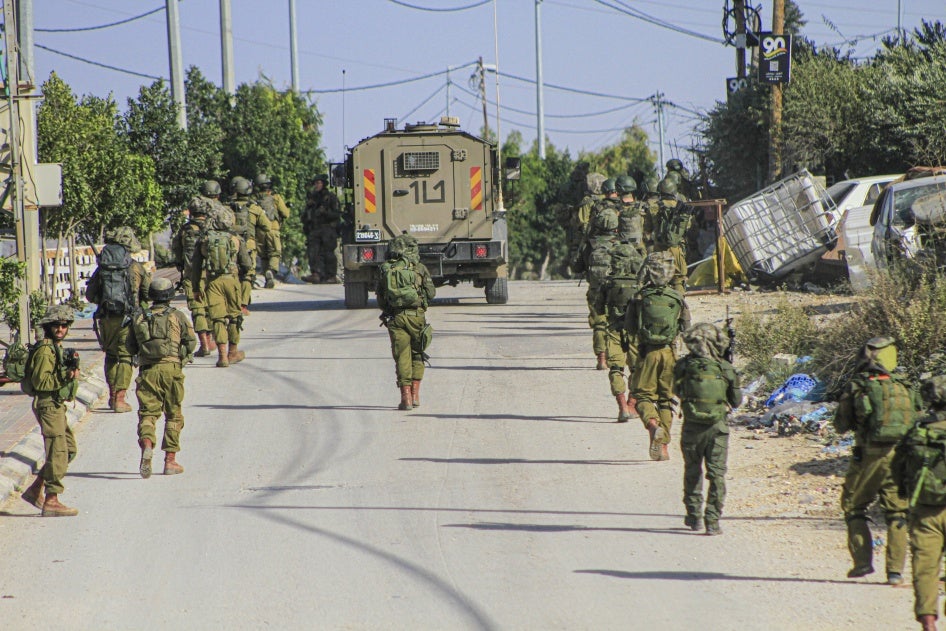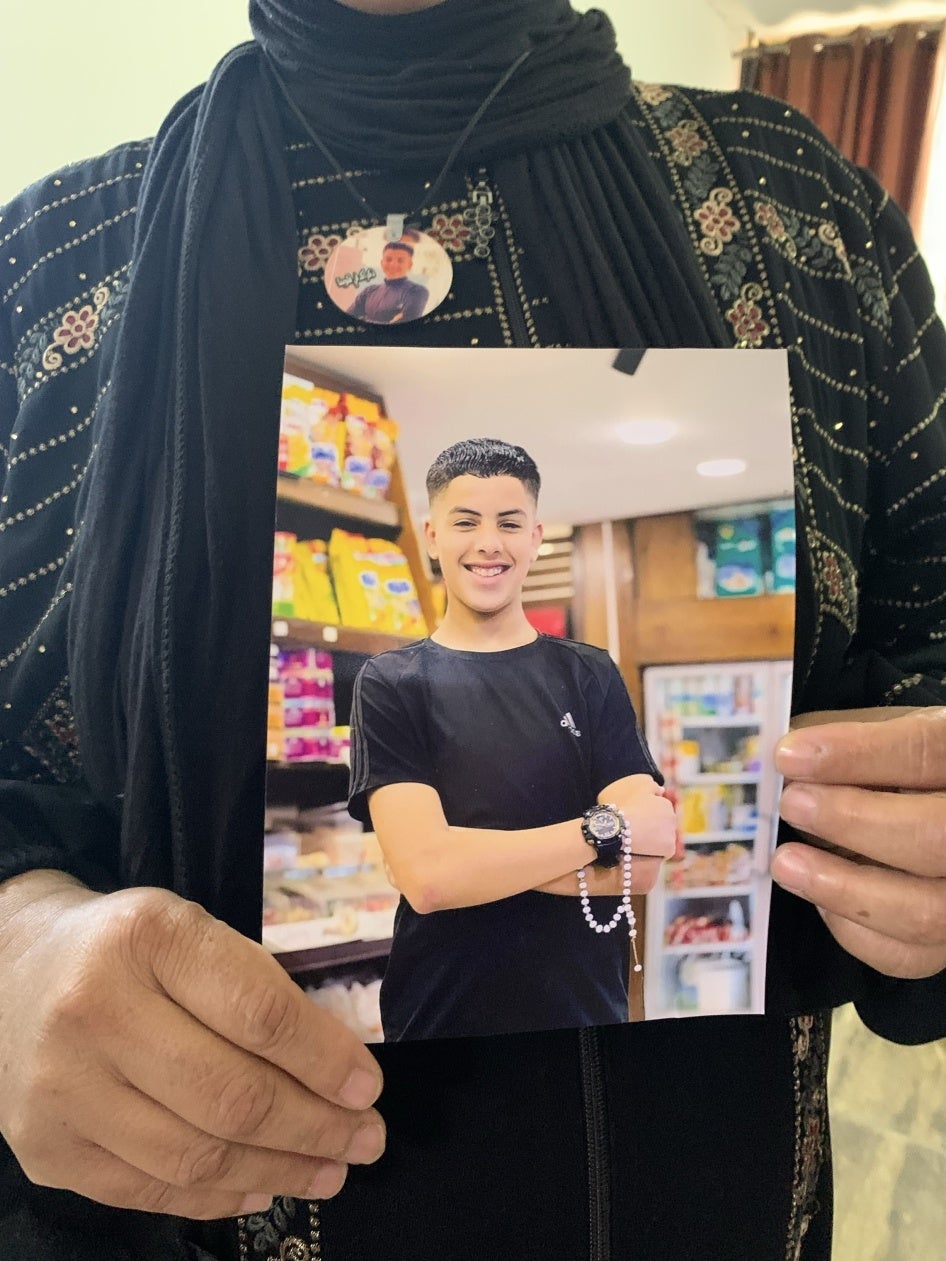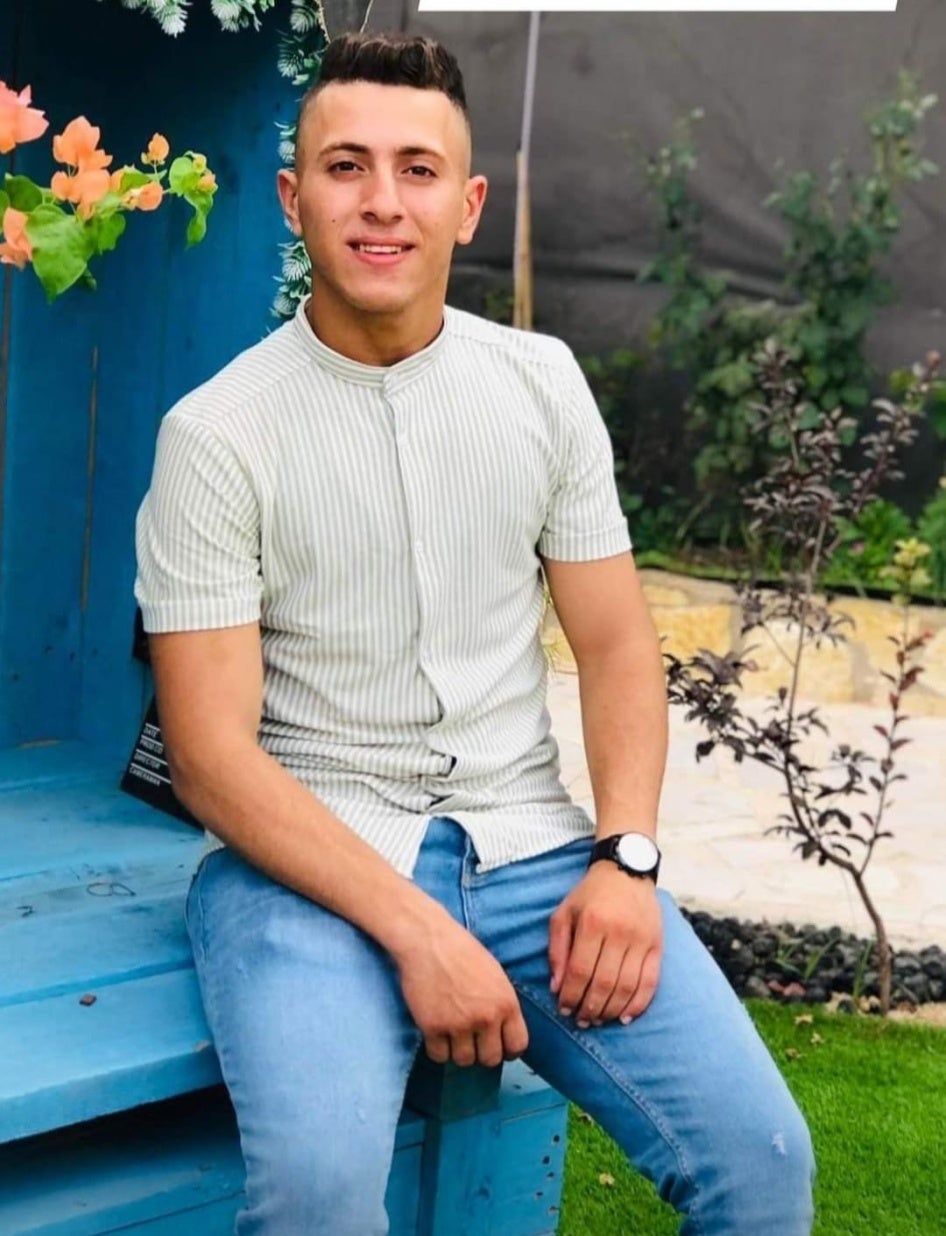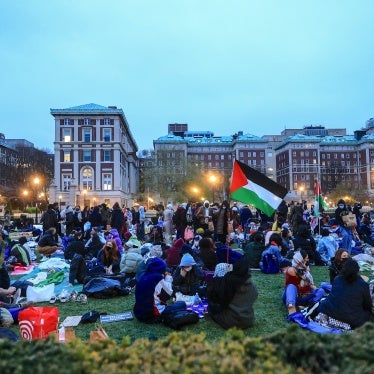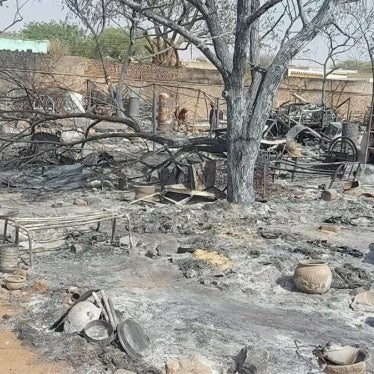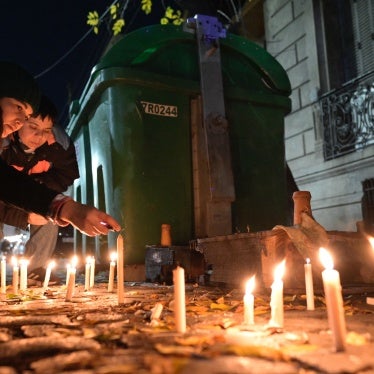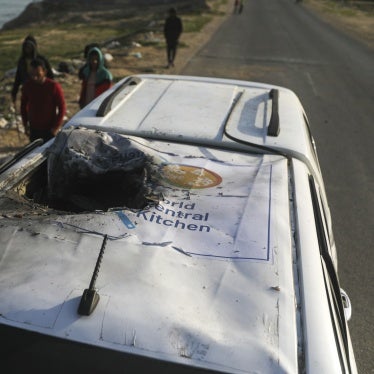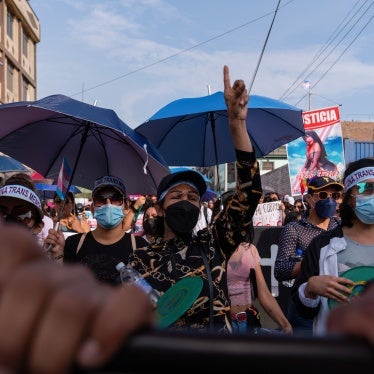- Israeli security forces have unlawfully used lethal force in fatal shootings of Palestinians, including deliberately executing Palestinians who posed no apparent security threat, based on documentation of several cases since 2022.
- The United Nations reported that such killings are now taking place at a level without recent precedent in an environment in which those responsible need not fear the Israeli government will hold them accountable.
- Governments should support the International Criminal Court’s probe into serious crimes committed in Palestine and impose targeted sanctions against those responsible for grave abuses.
(Jerusalem, May 8, 2024) – Israeli security forces have unlawfully used lethal force in fatal shootings of Palestinians in the West Bank, Human Rights Watch said today, based on documentation of several cases. Research into eight deaths in four incidents between July 2022 and October 2023 concluded that Israeli forces wrongfully fatally shot or deliberately executed Palestinians who posed no apparent security threat.
Human Rights Watch and other human rights groups have long documented the unlawful and excessive use of lethal force by Israeli forces in the West Bank and the Israeli government’s failure to hold those responsible to account. According to the United Nations, Israeli security forces killed more than twice the number of Palestinians in the West Bank in 2023 than in any year since systematic data collection began in 2005, and the rate of killings was even higher during the first quarter of 2024.
“Israeli security forces are not just unlawfully killing Palestinians in Gaza, but have been killing Palestinians without a legal basis in the West Bank, including deliberately executing Palestinians who posed no apparent threat,” said Richard Weir, senior crisis and conflict researcher at Human Rights Watch. “These killings are taking place at a level without recent precedent in an environment in which Israeli forces have no need to fear that their government will hold them accountable.”
Between May and November 2023, Human Rights Watch interviewed 14 witnesses and 6 family members of victims of fatal shootings by Israeli security forces in the West Bank. Human Rights Watch also spoke to medical personnel in the West Bank and reviewed medical records, verified videos posted on social media, and news reports. Human Rights Watch wrote to the Israel Defense Forces on August 8, 2023, and April 23, 2024, with questions about the eight fatalities and the military’s rules regarding the use of force, but has not received a reply to either query.
Human Rights Watch has also released a question-and-answer document on the international legal framework applicable to violence and the use of force in the West Bank.
In one case that Human Rights Watch investigated, Israeli forces in Jenin repeatedly fired upon Sidqi Zakarneh, who was crawling injured on the ground, killing him. Videos showed that he was not participating in violence and did not appear to have weapons. In another case, in the northern West Bank, family members said Rafiq Ghannem went out apparently unarmed early one morning to investigate loud noises. He encountered Israeli forces, who fatally shot him when he tried to flee.
Israeli forces in 2023 killed 492 Palestinians, including 120 children, in the West Bank, including East Jerusalem, according to the UN Office for the Coordination of Humanitarian Affairs (OCHA). That figure is more than twice as many as in any other year since the UN began systematically documenting fatalities. About 300 were killed in the nearly three months following the October 7 Hamas-led attacks on Israel, though the increase in killings dates back to 2022. Between January 1 and March 31, 2024, Israeli forces killed 131 Palestinians in the West Bank.
In 2023, Palestinians killed 25 Israeli civilians in the West Bank, the highest figure in at least 15 years, and 5 members of the Israeli armed forces, according to OCHA.
Palestinians have been at risk of being killed by Israeli security forces throughout the West Bank, whether traveling to and from work or in their own neighborhoods. Children on their way to school have been fatally shot, as Human Rights Watch documented in August 2023. The Israeli newspaper Haaretz found that in 2022, in only 45 percent of incidents in which Palestinians were killed did the Israeli military even allege that the victims were armed or that there were “clashes in which there was an exchange of gunfire.”
Between October 7, 2023, and March 18, 2024, Israeli forces conducted a monthly average of 640 search-and-arrest and other operations in the West Bank, nearly double the 340 such operations during the first nine months of 2023, according to OCHA. These operations resulted in the killing of 304 Palestinians, out of a total of 409 killed by Israeli forces during this period.
During a search-and-arrest operation near the West Bank city of Tulkarem on October 19, Israeli forces shot and killed 15-year-old Taha Mahamid and, minutes later, wounded his father, Ibrahim, who went to retrieve his body. Video and other evidence shows no sign that either was carrying a weapon. Ibrahim Mahamid died of his injuries four months later. Witnesses said, and video footage supported, that the shootings occurred at a time when there were no active confrontations in the area and neither Taha nor his father posed any imminent threat to Israeli forces.
Israeli security forces in the West Bank are bound by international human rights law. The UN Basic Principles on the Use of Force and Firearms by Law Enforcement Officials provide that the “intentional lethal use of firearms may only be made when strictly unavoidable in order to protect life.”
Israel does not make public the rules on the use of force that it applies to the army. However, in the cases documented by Human Rights Watch, Israeli military personnel engaged in law enforcement used lethal force when it was not strictly unavoidable to protect life, including firing on people who were fleeing or were considered to be linked to clashes or possible violent acts.
Repeated unlawful killings and endemic impunity are among the inhumane acts that make up the crimes against humanity of apartheid and persecution that Israeli authorities commit against Palestinians, as Human Rights Watch and other rights groups have documented.
Governments should suspend arms and other military support to Israel because of the risk of complicity in grave abuses in Palestine, take action to ensure accountability including supporting the International Criminal Court’s probe into serious crimes committed in Palestine, and impose targeted sanctions against those responsible for grave abuses.
“The Israeli government’s permissive and discriminatory practices on the use of force and endemic impunity are one facet of the apartheid and structural violence Palestinians face every day,” Weir said. “The unlawful killings in the West Bank will continue so long as the Israeli authorities’ systemic repression of Palestinians continues.”
Impunity for Unlawful Use of Lethal Force
Human Rights Watch has previously documented that some senior Israeli officials have encouraged soldiers and police to kill Palestinians suspected of attacking Israelis, even when they are no longer a threat. Haaretz reported that since “December 2021, soldiers are allowed to shoot at Palestinians who are fleeing if they had previously thrown stones or Molotov cocktails.” In April 2022, then-Prime Minister Naftali Bennett said there would be “no restrictions” on Israeli forces’ response to Palestinian violence. In October 2022, Itamar Ben-Gvir, now the national security minister, said while running for election that it should be legal to use lethal force against anyone throwing stones.
Such statements, coupled with the lack of accountability for abuses, contribute to a permissive environment for security forces to unlawfully use lethal force, Human Rights Watch said.
Despite decades of frequent unlawful killings of Palestinians in policing situations, Israeli authorities continue to use tactics that contravene international human rights norms. Israeli security forces do not use a similar pattern of unlawful lethal force against Jewish Israelis, even during disruptive demonstrations, including by West Bank settlers, that involve stone-throwing and blocking roads. This indicates that Israeli authorities use of unlawful excessive force is discriminatory and is used to further their policy of maintaining domination by Jewish Israelis over Palestinians.
The Israeli rights group Yesh Din found that between 2017 and 2021, fewer than one percent of complaints of violations by Israeli forces against Palestinians, including killings and other abuses, resulted in criminal indictments. During the same period, Yesh Din found that only three soldiers were convicted for killing Palestinians, and all received short sentences of military community service. The Israeli rights group B’Tselem, which for years filed claims and reported on the military justice system, have characterized the military’s internal law enforcement system as a “whitewash mechanism.”
The International Criminal Court (ICC) prosecutor, Karim Khan, has confirmed that his office has, since March 2021, been conducting an invesetigation into serious crimes committed in Palestine since 2014.
Cases of Killings of Palestinians
Taha and Ibrahim Mahamid, Nur Shams, October 19, 2023
On October 19, 2023, just before 3:30 a.m., as captured in a voice note sent by a local resident, sirens went off in Nur Shams refugee camp, in Tulkarem in the northern West Bank, warning residents that the Israeli military was preparing to enter the camp. At 3:31 a.m., as confirmed in a video that Human Rights Watch verified, 15-year-old Taha Mahamid was approaching Nablus Street, the main street in front of his home in the al-Malash neighborhood in the camp, near its entrance, when at least two bullets struck him.
Taha’s sister Sara, who filmed the video, told Human Rights Watch that, after hearing the sirens, she opened her bedroom window to observe what was happening. Sara saw Taha outside with their neighbor and asked Taha what he was doing. “I won’t be long,” he said. “I want to see the [military] jeeps and come back up.” She said he was holding only a cellphone.
The video shows two males, one identified as Taha, stepping cautiously toward Nablus Street in Nur Shams from Taha’s home. As he approaches the main road, Taha turns his body to the right to look east along Nablus Street. One second later a shot is heard and Taha collapses to the ground. Two more shots ring out, and Taha lies there motionless. No Israeli forces or armed Palestinians were in the area, Sara said. The video shows no sign of an active confrontation or of Taha carrying a weapon of any kind.
The preliminary forensic medical report by the Martyr Dr. Thabet Hospital in Tulkarem recorded that Taha was dead when he was brought by ambulance to the emergency room of the hospital. It states that two bullets hit Taha in the front of his body “from below the right eye” and that they “exited from the back of the head,” indicating that the shots were most likely fired from the direction in which Taha was looking.
Minutes after Taha was shot, his father, Ibrahim Mahamid, 58, left the house and went toward Taha. He told Human Rights Watch that he could not bear the sight of his son bleeding on the ground or the thought of Israeli forces taking him. When he reached Taha, a bullet struck the father in the abdomen, he said and medical reports confirmed. Videos reviewed by Human Rights Watch show him next to Taha, rolling over in an attempt to stand up, until a neighbor arrives and helps him to reach his house.
Sara made two phone calls to the Palestinian Red Cresent Society, at 3:37 a.m. and 3:43 a.m., requesting ambulances. The neighbor, a volunteer paramedic, also called for ambulances. The Red Crescent informed them that ambulances would not be able to immediately reach them, as Israeli forces were blocking entry to the camp.
An ambulance arrived at the scene at 4:44 a.m., more than an hour after Taha had been shot, according to a video Sara shared and that Human Rights Watch verified. About 10 minutes later, another ambulance came for Ibrahim Mahamid. “All this time, there was absolutely nothing outside,” Sara said. “No sound, no movement … no one came to him.” She said that Taha lay motionless, with blood around his head.
The Office of the UN High Commissioner for Human Rights documented that Israeli authorities “prevented Palestinian paramedics from accessing the injured” during the October 19 raid, which the office said “reflect[s] a growing pattern.” This obstruction could have denied Ibrahim Mahamid and possibly his son access to life-saving medical care, Human Rights Watch said.
Ibrahim Mahamid succumbed to his injuries on February 29, OCHA reported. A death certificate from the Palestinian Interior Ministry, signed by the Health Ministry, identified “aspiration, septic shock,” as a result of an “abdominal bullet injury,” as the cause of death.
Human Rights Watch concluded, based on its research, that Israeli forces shot both Taha and Ibrahim Mahamid. The shootings occurred at the entrance to the camp, at about the time that Israeli forces entered the camp. Residents said that Israeli forces had a practice of taking positions in and atop buildings in the camp to provide cover for troops to enter. As far as Human Rights Watch could determine, while Israeli authorities made no statement regarding the shooting of Taha and Ibrahim Mahamid, the Israeli military said that they had killed “more than 12 terrorists” in Nur Shams camp during the entire operation.
The Israeli military operation in Nur Shams camp that day lasted 27 hours, according to OCHA, resulting in the death of 14 Palestinians, including 6 children. The Israeli military said that its Duvdevan Unit of the Commando Brigade and its Duchifat Battalion and Sayeret Haruv of the Kfir Brigade carried out the operation, alongside the Israeli Border Police, including its Yamas Unit, which conducts covert and special operations. Israeli authorities said the operation in the camp was intended to “arrest wanted persons, destroy terrorist infrastructure, and confiscate weapons.” They said a member of the Yamas Unit of the Border Police was killed during the operation. They have not indicated that they are investigating the deaths, including those of Taha or Ibrahim Mahamid.
There was no apparent basis for shooting Taha and Ibrahim Mahamid, Human Rights Watch found. They posed no imminent threat to life or serious injury, making their killings unlawful.
During a subsequent 50-hour Israeli military incursion in Nur Shams on April 18-20, Israeli forces killed 14 Palestinians and severely damaged infrastructure in the refugee camp, OCHA reported.
Atta Shalabi, Sidqi Zakarneh, and Tareq Damaj, Jenin, December 8, 2022
At about 5 a.m. on December 8, 2022, Israeli forces shot dead three Palestinian men on a main road in the middle of Jenin city, while Israeli forces conducted a search-and-arrest raid nearby. Video verified by Human Rights Watch indicates that Sidqi Zakarneh, 29, Tareq Damaj, 29, and Atta Shalabi, 46, were all seemingly unarmed.
Zakarneh was shot as he approached an intersection near where the raid was taking place and then, after being seriously wounded, was shot repeatedly as he tried to crawl away. Damaj and Shalabi were both shot apparently after they stopped near where Zakarneh had been shot. Israeli forces were apparently deployed in a café on the second floor of a building that overlooked an intersection about 50 meters from where the arrest raid was taking place.
Human Rights Watch verified and reviewed six videos on social media that show: Zakarneh and Damaj being shot; the apparent moment when Shalabi was shot and Shalabi’s motionless body; men dragging Shalabi away; and Israeli forces exiting the area following the killings.
The first shooting took place as Zakarneh and two other men were leaving a car parked on Al-Malek Faysal Street about 25 meters north of the intersection with Al-Nahda Street. A closed-circuit television video posted online shows Zakarneh being wounded by gunfire a few meters from the car. One man flees north, away from the intersection and the nearby raid. Zakarneh begins to slowly crawl on his stomach back toward the vehicle, and then at least two successive shots can be seen striking him, apparently in the head. At no time does it appear that Zakarneh or the men he was with were openly carrying weapons or engaged in acts of violence.
In a closed-circuit television (CCTV) video filmed just after Zakarneh was shot, another vehicle pulls alongside the car that carried Zakarneh. The driver, whom a witness later identified as Damaj, exits the vehicle and can be seen approaching cars driving on Al-Malek Faysal Street, near where Zakarneh lies, gesturing in his direction. As Damaj approaches Zakarneh, he is shot repeatedly and falls to the ground. The other vehicles in the area speed away, leaving the two men motionless in the street. From the videos alone, it is not clear where the shots originated.
The witness who identified Damaj said that minutes after Damaj was shot, the witness approached the scene, driving behind an ambulance to help recover the men. “When we got out of the car, we saw two martyrs, their bodies full of bullet holes, especially in their heads,” he said.
The witness said that while he and medics from the ambulance attempted to move one of the men, bullets struck the area around them. They could not confirm the direction from which the bullets came. The witness said he and the medics fled after managing to get one of the men into the ambulance. The witness said he did not see any weapons on or near the men.
At the same time, several men, including Shalabi and his brother, were near the intersection, as seen in a CCTV video verified by Human Rights Watch. At one point in the video, Shalabi approaches the ambulance, then walks back toward Al-Nahda Street and out of view of CCTV cameras. Seconds after he disappears from view, a man nearby is seen flinching and running for cover, apparently under gunfire.
The video then shows Shalabi’s brother running from where he and Shalabi had just moved out of view. Two videos posted online show Shalabi face down on Al-Nahda Street. One of these then shows Shalabi’s brother dragging his body back toward Al-Malek Faysal Street, in view of the CCTV cameras. At no time do any of the videos show anyone carrying weapons, weapons near the bodies of those shot, or anyone engaging in acts of violence.
Shalabi was shot immediately below the café that Israeli forces were apparently occupying during the raid. Shalabi’s motionless body is just a few meters from a door to a stairway that leads up to the café. Human Rights Watch visited the site and saw that the large door had been damaged. Residents said the damage occurred when Israeli forces forced it open on the morning of the raid. One shop worker said that he reviewed his CCTV camera footage after the raid from early that morning, which showed Israeli forces driving past the entrance and then returning. Human Rights Watch did not review this footage.
The location of the victims’ bodies, impacts visible in videos circulated online, and damage on the asphalt are consistent with small arms fire coming from an elevated position on the corner where the café is located.
Shortly thereafter, a witness who was helping to recover the body on Al-Malek Faysal Street said, Israeli armored vehicles drove up and stopped near the intersection with Al-Nahda Street. A CCTV video posted online also shows Israeli forces pulling up in multiple armored vehicles, with seven members of the armed forces coming from Al-Nahda Street just meters from the entrance to a stairwell that leads to the café. All seven armed forces personnel are seen boarding one of the armored vehicles through its rear doors.
Human Rights Watch visited the site where the men were killed and identified damage on the asphalt consistent with small arms fire in the locations where a witness said the three men were shot. Videos circulated on social media show the men shot or lying apparently dead in positions consistent with the damage on the asphalt that Human Rights Watch observed.
Following the killings, the Israeli military released a statement about its operations in Jenin city, saying that during an operation to arrest two suspects, the soldiers were “targeted with direct fire and responded with live fire, hits were identified.” They said that they had confiscated a weapon used by one of the suspects.
The Jenin branch of the armed group Palestinian Islamic Jihad made a statement following the raid in Jenin claiming to have attacked Israeli troops with gunfire and explosives. They do not specify the location or time of the attacks. Human Rights Watch found no evidence that Shalabi, Zakarneh, or Damaj were engaged in any acts of violence.
The totality of the video and witness evidence shows that Zarkaneh, Damaj, and Shalabi did not present an imminent threat to life or serious injury in the moments leading up to when Israeli forces shot and killed them. At no time immediately prior to their killings did any of these men appear to possess or use weapons. The men’s conduct, as captured on video, does not show them engaged in violent acts, nor does it show Israeli forces attempting to exercise restraint. Instead, Israeli forces appear to have immediately intentionally used firearms, in violation of international norms.
Following the killings, the Palestinian armed group Al-Aqsa Martyrs Brigade claimed Zakarneh as a member and a “fighter,” while Islamic Jihad’s Al-Quds Brigade claimed that Damaj was a member. There is no further information about the extent of their respective memberships and their activities. Photos and posts circulated online before and after the incident show the two men posing with rifles. Shalabi does not appear to have participated in any armed group.
Regardless, membership or the past activities of Zakarneh and Damaj in any group is not a relevant factor in determining the standards on the intentional lethal use of force or firearms by forces acting in a law enforcement role. If Israeli authorities had a legal basis to arrest the men, the security forces could have acted to take them into custody and, depending on their response, used the minimal force necessary to achieve a legitimate law enforcement objective.
The repeated shooting of Zakarneh while he crawled on the ground injured and posed no imminent threat and the shooting of the other men likely amount to extrajudicial killings outside of the existing legal framework.
Jawad Rimawi and Thafer Rimawi, Kafr Ein, November 29, 2022
On November 29, 2022, Israeli forces on patrol in the village of Kafr Ein, northwest of Ramallah, shot and killed the brothers Jawad Rimawi, 22, and Thafer Rimawi, 19, who were from nearby Beit Rima. They and other Palestinians had confronted an Israeli armored vehicle convoy with rock-throwing and an apparent “Molotov cocktail” (gasoline bomb). After being shot, the brothers were taken in private vehicles to a nearby hospital, where they died from their injuries.
Early that morning, an Israeli convoy of armored vehicles approached Kafr Ein from the east. Witnesses said that Palestinians from nearby villages alerted Kafr Ein residents that forces were heading toward them, and residents awake at the time saw the vehicles approaching. One resident heard a commotion from the center of town, including what he described as gunshots, and began filming from his rooftop.
The convoy made its way from the center of Kafr Ein toward its periphery. A witness said that up to four people, including the Rimawis, had also moved there, to the front yard of an unoccupied house along the main road leading out of the village to the south.
Another witness said that as the armored vehicles approached this house, people threw rocks at them and attempted to set tires alight on the road. A video shared with and verified by Human Rights Watch shows at least five Israeli armored vehicles passing by the front of the house, where the brothers were in the yard. In the video, the call to prayer can be heard starting, indicating that it was filmed shortly before 5 a.m.
A bright fireball erupts on or near the house’s front patio, at least 25 meters from the road, as one of the vehicles drives past. A small fire is seen in the yard first, followed by an intense larger fire apparently on the patio that dissipates within seconds. It is unclear if the two fires were ignited with the same material.
An independent expert on fire dynamics reviewed the video and concluded that the characteristics of the fires are consistent with the use of an incendiary device like a Molotov cocktail.
Just after the fireball erupts, nine gunshots are heard on the video. As the gunshots are ringing out, a man’s voice, identified by his family as Thafer’s, is heard screaming for Jawad. Approximately eight seconds after the last of the nine gunshots, a single shot is heard.
A witness said that Jawad, who was meters away across the yard, was coming to assist his brother when he was shot.
Less than 10 seconds after this single shot, an Israeli armored vehicle, which now appears in the video in front of the house, continues forward, following the other vehicles in the convoy. The remaining 40 seconds of the video do not show any more vehicles, suggesting that the gunfire came from this vehicle, the last in the patrol. No Israeli personnel appear to be outside of the vehicles at any time, and witnesses said they saw no forces on foot as the vehicles passed.
Human Rights Watch found what appeared to be a grouping of bullet holes about 1.5 meters up from the ground in a window on the side of the house where the fireball erupted.
After the shooting, residents raced to the wounded Rimawi brothers, placed them in separate private vehicles and rushed them to a hospital in Salfit, eight kilometers away. Based on interviews with doctors, reviews of medical reports, and witnesses, Thafer was hit by bullets at least twice in the chest. Jawad was hit in the lower abdomen.
Doctors at the hospital rushed Jawad into surgery and transferred Thafer by ambulance to a specialist hospital in Ramallah.
Jawad died during surgery. A hospital report, which Human Rights Watch viewed, documented a single gunshot entry wound in Jawad’s lower abdomen with no exit wound.
Thafer had no pulse when he arrived at the Ramallah hospital, said his sister Ru’a, who rode in the ambulance with him, and was pronounced dead. A report by the Palestinian Medical Complex said he had “several bone wounds in the sternum and lower neck.” A death certificate from the Palestinian Interior Ministry says that Thafer had “multiple gunshot injuries to the chest.”
A Molotov cocktail can cause serious injuries or death. However, were one to ignite and burn 25 meters or more from a moving armored military vehicle, it would not place those inside the vehicle at continuing risk.
One witness said that when Thafer was shot, he was not throwing a Molotov cocktail. Even if he were involved with the Molotov cocktail attack that had exploded at the house, when Israeli forces shot him, he no longer presented an imminent threat to life or serious injury. There were no Israeli forces on foot in the vicinity and the last armored vehicle was driving away. The use of deadly force against Jawad and Thafer Rimawi by Israeli forces appears unjustified.
Rafiq Ghannam, Jaba, July 6, 2022
At about 2:30 a.m. on July 6, 2022, Israeli forces fatally shot Rafiq Ghannam, 20, outside his home in Jaba in the northern West Bank between Jenin and Nablus. His family members said that Ghannam was asleep, his clothes laid out for his workday in Israel, when loud noises outside awakened him. According to residents, Israeli soldiers had surrounded his small neighborhood and were attempting to arrest the Ghannams’ neighbor, who lived on the other side of a high wall to the east that separated the two homes. The Ghannams’ house has a tall steel gate and is next to an olive tree grove at the end of a cul-de-sac, about 100 meters down a road connecting the cul-de-sac to a larger road.
Ghannam got out of bed wearing a white tank-top and brown shorts and put on his sandals. His brother and mother were already awake. Ghannam joined his brother at the gate to their house and peered out. Unable to see anything, Ghannam walked out of the gate. Three people said that they saw him step cautiously from his house; they said they did not see a weapon. As he reached the edge of a neighbor’s house, about 10 meters from his home, there was a simultaneous eruption of gunfire and shouting by Israeli forces, based on witness accounts and a video that Human Rights Watch reviewed.
Witnesses said several shots were fired as Ghannam approached the corner of his neighbor’s house, where there is an opening to the olive tree grove. At least seven shots can be heard on the video. Human Rights Watch could not establish the direction from which the forces fired and found no evidence that bullets struck the area around where Ghannam was standing, either on the ground or walls, indicating that the shots could have been fired into the air.
Witnesses said Ghannam ran from the gunfire, down the cul-de-sac leading to the main road. The video has audio of several gunshots and shows an individual who appears to be wearing a helmet and a backpack running in the direction that witnesses said Ghannam ran.
Witnesses lost sight of Ghannam as he ran down the cul-de-sac but said that shortly after, they saw Israeli forces return to the area around his house and walk back and forth. After the forces left, residents found a large pool of blood at the end of the cul-de-sac nearest to the main road.
Within hours, an Israeli intelligence officer called a relative of Ghannam who lived nearby, saying that Israeli forces had Ghannam and would provide information about him if the neighbor they had come to arrest surrendered. Shortly thereafter, the officer called again and told the relative: “I have a present for you.” The authorities had detained the wanted neighbor’s younger brother, gave him Ghannam’s blood-stained cellphone, and then released him. The brother handed the phone to Ghannam’s family.
At about 8 a.m., the Palestinian Coordination and Liaison Office informed the family that Ghannam had been killed. Israeli authorities took 21 days to return his body to the family.
An autopsy report from the Palestinian National Authority’s Public Prosecution Office notes a 0.5 centimeter wound on Ghannam’s back under the left shoulder, that it assessed as the bullet entry wound, and a 3.5 centimeter wound with irregular edges on Ghannam’s chest, that it assessed as the exit wound. The entry and exit wounds suggest that Ghannam was facing away from his shooter.
In a statement released later on July 6, the Israeli military said: “the force initiated a suspect apprehension procedure, which included opening fire at a suspect who fled from a building, and detected an injury to the suspect. The force provided medical aid to the suspect, but he was later pronounced dead. The circumstances of the case are being investigated.” Haaretz initially reported that the military said Ghannam threw a Molotov cocktail at the forces who had entered his neighborhood to arrest “a terror suspect.”
A subsequent report by Haaretz indicated that the Israeli forces’ investigation was complete and had been submitted to the military advocate general to decide whether any charges would be brought.
The outcome of the investigation has not been disclosed, and there have been no further announcements. The Israeli military did not respond to a Human Rights Watch letter requesting information on the status of the case.
There is no evidence that indicates that Rafiq Ghannam engaged in any acts of violence or that he presented an imminent threat of serious injury or death to Israeli forces. The Israeli military said on July 6 that it shot Ghannam because he fled a building and did not stop, an insufficient justification for the use of lethal force under the applicable international standards.
